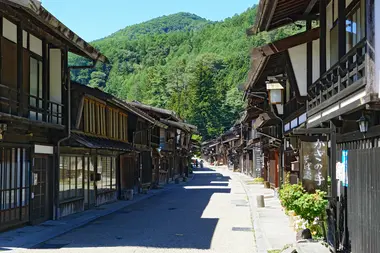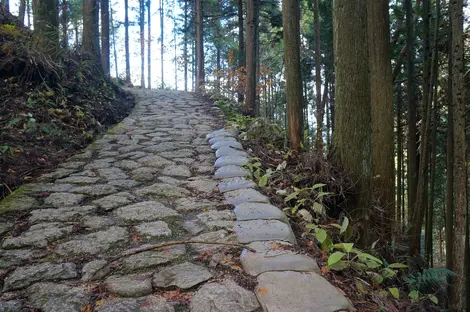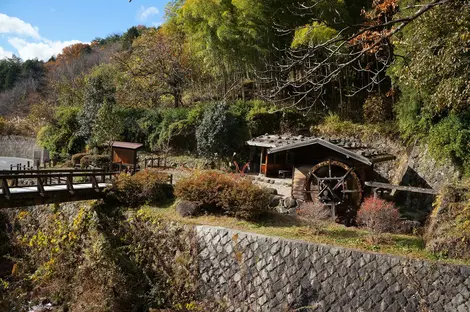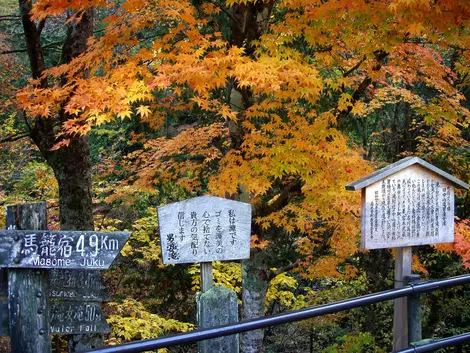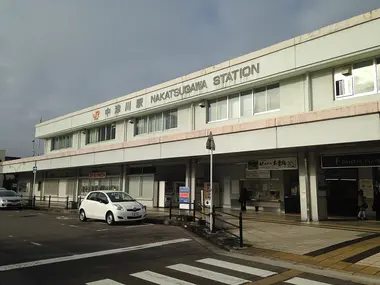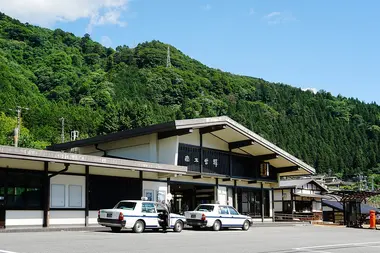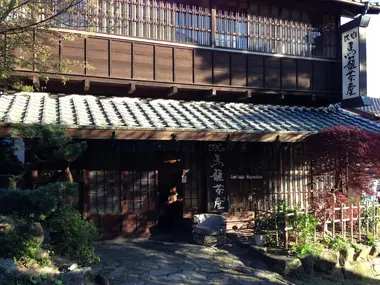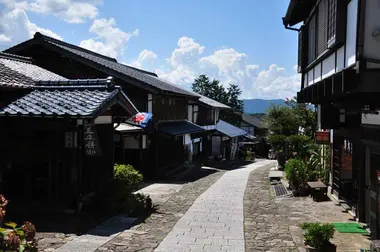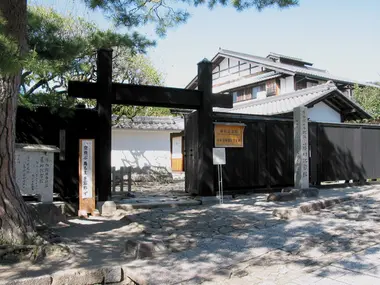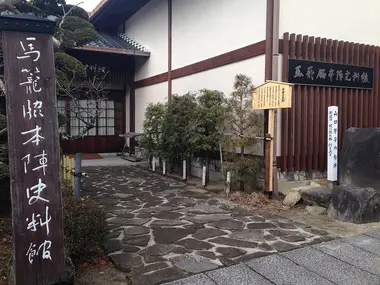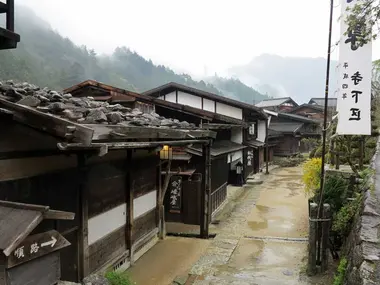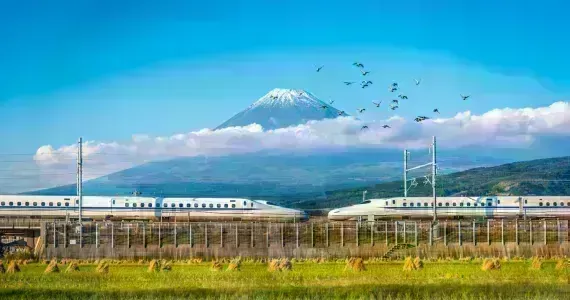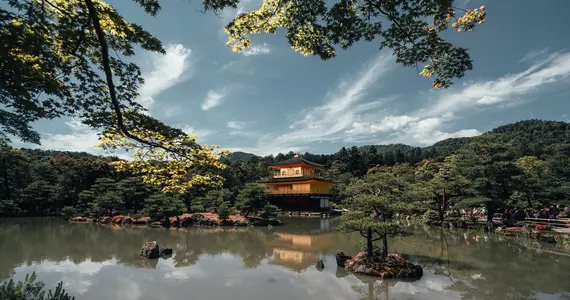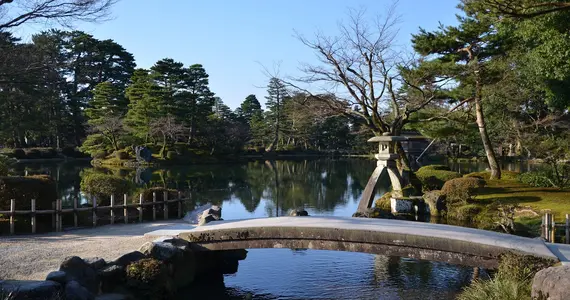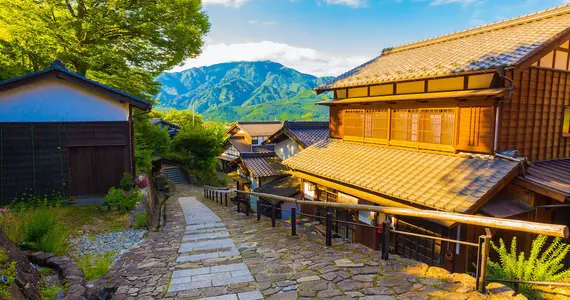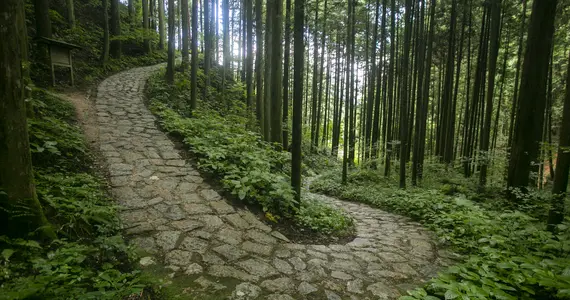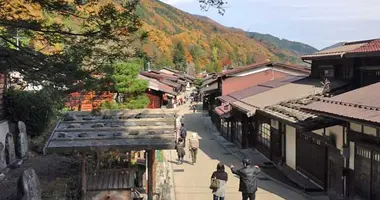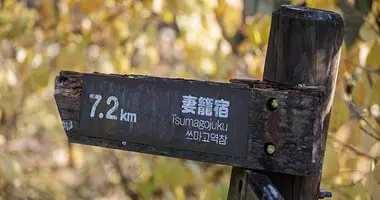The Magome-Tsumago Trail: Getting to and Exploring Japan's historic Nakasendo
- Published on : 12/06/2025
- by : Japan Experience
- Youtube
Nestled in the heart of Japan, the Magome Tsumago Kiso Valley offers a captivating journey through time along the historic Nakasendo trail.
During the Edo Period in Japan, the Nakasendo Trail (also known as the Kisokaido Trail) served as one of the primary means of getting between the capital of Kyoto and the major city of Edo (modern-day Tokyo). Running through the Kiso Valley, its historical significance is well acknowledged today, with many modern-day routes and roads following its path.
The Nakasendo, meaning "central mountain route," stretches over 500 kilometers. This inland route was favored by many travelers, including daimyo lords, merchants, and pilgrims, as it avoided the treacherous river crossings of the coastal Tokaido route. The Nakasendo played a crucial role in Japan's history, facilitating trade, communication, and cultural exchange between the imperial capital and the shogun's seat of power.
Along its length, the Nakasendo featured 69 post towns where travelers could rest, replenish supplies, and change horses. These towns, known as juku, became vibrant hubs of activity, each developing its own unique character and traditions. Today, several of these post towns have been meticulously preserved or restored, offering visitors a glimpse into Japan's feudal past.
About the Magome-Tsumago Hiking Trail
Traversing over lush forests and fields, the Magome-Tsumago Hiking Trail is a beautifully scenic journey that seems almost out of a movie. The trail spans 8 kilometers (around 5 miles); this relatively leisurely hike takes around 2-4 hours to complete and is located in both Gifu and Nagano, two of the geographically largest prefectures in Japan that are also both fully landlocked. These are prefectures rich with rolling mountains and flowing rivers.
As its name suggests, it goes between the towns of Magome and Tsumago, two former post towns that were on the Nakasendo Trail that are preserved as they were in the Edo Period, complete with wooden structures and stone trails.
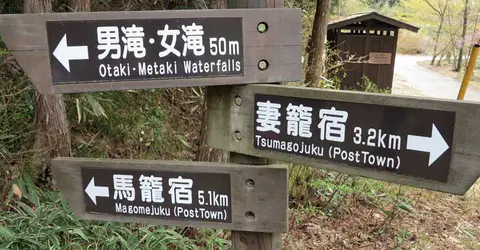
Signs marking the Magome-Tsumago Trail
@Japan Visitor
Post towns were villages along the Nakasendo Trail that served as stops for travelers with inns, places to resupply, and other facilities. Tsumago was the 42nd post town and Magome was the 43rd out of 69 post towns total. Accessing the Magome-Tsumago Trail entails going to one of these two towns and then embarking on the hiking journey to the other.
The Magome-Tsumago Trail consists of gorgeous scenery with a few small villages between the two main towns. Along the way, stone paths as they were back in the Edo Period can be found, with gorgeous vistas of the greater Kiso Valley being a treat the whole way. During autumn especially, when the leaves change to vibrant shades of burgundy and gold, the atmosphere absorbs hikers.
Planning your hike: Transportation, logistics, and practical tips
To make the most of your Nakasendo adventure, consider the following tips:
Transportation: The most convenient access points are Nakatsugawa Station (for Magome) and Nagiso Station (for Tsumago), both located on the JR Chuo Main Line. From these stations, local buses run to the respective post towns.
Baggage Forwarding Service: A convenient baggage forwarding service is available between Magome and Tsumago, allowing you to hike comfortably without carrying heavy luggage. Simply drop off your bags at the tourist information center before 11:30 AM and collect them at your destination after 1:00 PM. More information on this service can be found here.
Accommodation: For an authentic experience, consider staying in a traditional ryokan or minshuku in either Magome or Tsumago. These inns often provide dinner and breakfast, offering a taste of local cuisine.
Best time to visit: The trail is accessible year-round, but spring (April-May) and autumn (October-November) offer the most pleasant weather and stunning scenery. Summer can be hot and humid, while winter may see occasional snowfall.
Essential items: Comfortable walking shoes, water, snacks, and cash (as many small businesses in the area don't accept credit cards) are must-haves for your hike.
Getting to Magome and Tsumago
Magome is located in Gifu and Tsumago is located in Nagano, with both towns being right at the border of the two prefectures. Traversing the trail can be done from either town to the other. Choosing your starting point will depend on access as well as which town sounds more appealing to start and end at. Take a look at further detail on both Magome and Tsumago as individual destinations.
Getting to Nagoya and Nagano to get to the Magome-Tsumago Trail
Both Nagoya and Nagano are destinations that are easily accessible from the capital of Japan, Tokyo. Tokyo to Nagoya is around 1 hour 35 minutes via the Tokaido Shinkansen. Kyoto to Nagoya takes only around 30 minutes via Shinkansen. Tokyo to Nagano is around 1 hour 20 minutes via the Hokuriku Shinkansen.
Purchase train tickets to Nagoya and Nagano!
Getting to Magome
The closest train station to Magome is JR Nakatsugawa Station on the JR Chuo Main Line that connects Nagoya and Nagano.
The quickest option to this station is taking the Shinano Limited Express Train:
- 1 hour 15 minutes from Nagoya (2,870 yen).
- 2 hours to 2 hours 15 minutes from Nagano (5,610 yen).
The Chuo Line Sub Rapid train is also an option:
1 hour 50 minutes from Nagoya (1,340 yen).
These trains do not go to or depart from Nagano.
From Nakatsugawa Station, there is a bus that departs from bus stop no. 3. It takes around 25 minutes to get from Nakatsugawa Station to Magome (800 yen).
For those who have dedicated their time in the area to picturesque nature hikes, walking from Nakatsugawa Station to Magome takes around 2-3 hours, with the further hike out to Tsumago being another 2-4 hours. Though it is more time-consuming, it provides a great experience that parallels the journey of those who walked the Nakasendo back in the day!
Getting to Tsumago
Tsumago is located a bit north of Magome. The closest train station is JR Nagiso Station, also on the JR Chuo Main Line. It can also be accessed using the Shinano Limited Express Train:
1 hour from Nagoya (3,220 yen)
2 hours from Nagano (5,170 yen).
Tsumago may be a better place to start your hike on the Magome-Tsumago Trail if you are coming from Nagano.
However, only a few limited express trains will actually stop at Nagiso Station. One of these Shinano Limited Express trains can be taken out to Nakatsugawa Station, to which a transfer can be made for a local train to Nagiso Station.
From Nagiso Station, there is a bus that goes to the center of Tsumago and only takes around 7-10 minutes (300 yen). However, these buses are more infrequent and also aren’t on as consistent of a schedule compared to the ones that go from Nakatsugawa Station to Magome, so be sure to check the timetable before you travel!
If the bus schedule doesn’t fit with your itinerary, there will be taxis at Nagiso Station as well. This will take around 5-10 minutes and 2,000 yen to 3,000 yen. Walking is also a great option from Nagiso Station to Tsumago, taking just a bit under 1 hour and serving as a great precursor to the Magome-Tsumago hike.
Beyond the trail: Attractions and experiences in Magome and Tsumago
While the hike itself is a highlight, both Magome and Tsumago offer additional attractions and experiences. Take a look at more information on each respective town and what to do there!
Exploring Magome
Magome is the busier of the two towns, with a larger influx of visitors. It may serve as a good starting point for the Magome-Tsumago Trail due to its easier access from Nagoya as well as allowing travelers to go from a more bustling location to the more calming atmosphere of Tsumago.
However, there are plenty of things to check out in Magome before departing for the hike. Some of its most notable attractions are as follows:
- Toson Memorial Museum: Dedicated to writer Shimazaki Toson, who hails from the town of Magome.
- Magome-juku Honjin: A restored inn that serviced high-ranking officials during the trail's heyday.
- Magome Chaya: An old guest house complete with dining and refreshment options. Stay overnight for an authentic and traditional experience!
There are a number of specialties that the town of Magome is famous for! This includes oyaki, a dumpling similar in shape to a bagel with different fillings, and goheimochi, balls of mochi that are grilled and glazed with a special sauce and topped with nuts.
Exploring Tsumago
Though it doesn’t see as much active tourism as Magome, Tsumago is a charming getaway with its own appeal. This is actually one of the best-preserved post towns along the Nakasendo Trail. In fact, the town is designed to have electrical and phone lines hidden from view, and the main road doesn’t allow car access. Here are a few attractions to check out in Tsumago:
- Rekishi Shiryokan: A museum that documents the history of the area, the Nakasendo Trail, and the Kiso Valley as a whole.
- Waki-Honjin Okuya: Preserved since the Edo Period, this historic guesthouse served the elite of the time.
- Otake and Medaki Waterfalls: Located just outside of central Tsumago, these waterfalls once served as baths, one for men and one for women.
Tsumago Juku is well known for its wooden crafts that use local resources in their production. Known as Nagiso Rokuro-zaiku, it is a form of wood sculpting using spinning wheels and manipulation. Various goods can be purchased throughout the town.
Extending your Nakasendo adventure: Other nearby hiking options
For those looking to explore more of the Nakasendo, consider these additional hiking options:
- Yabuhara to Narai: This 6-kilometer hike takes you over the Torii Pass, the highest point on the Nakasendo
- Nagiso to Nojiri: A less-traveled 16-kilometer section that offers a more challenging hike through rural landscapes
- Karuizawa to Yokokawa: This 17-kilometer stretch in Nagano Prefecture features diverse scenery and historical sites
For a more extensive journey, consider joining organized Nakasendo Tours that cover multiple sections of the trail over several days.
Preserving tradition: The role of tourism in maintaining Japan's historical routes
The preservation and promotion of the Nakasendo trail and its post towns play a crucial role in maintaining Japan's cultural heritage. Tourism has become a vital economic lifeline for these rural communities, helping to fund restoration efforts and keep traditional crafts and customs alive.
Visitors to the Kiso Valley contribute to this preservation by:
- Supporting local businesses and artisans
- Staying in traditional accommodations
- Participating in cultural experiences and workshops
- Spreading awareness about the region's historical significance
As you explore the Magome Tsumago Kiso Valley, remember that you're not just witnessing history – you're actively participating in its preservation for future generations. By treading mindfully along the ancient Nakasendo, you're helping to ensure that this remarkable piece of Japan's heritage continues to thrive in the modern world.

